During the breeding season, he boasts distinctive characteristics, featuring a black body, a contrasting white rump, and a creamy nape.
Meet the Bobolink:
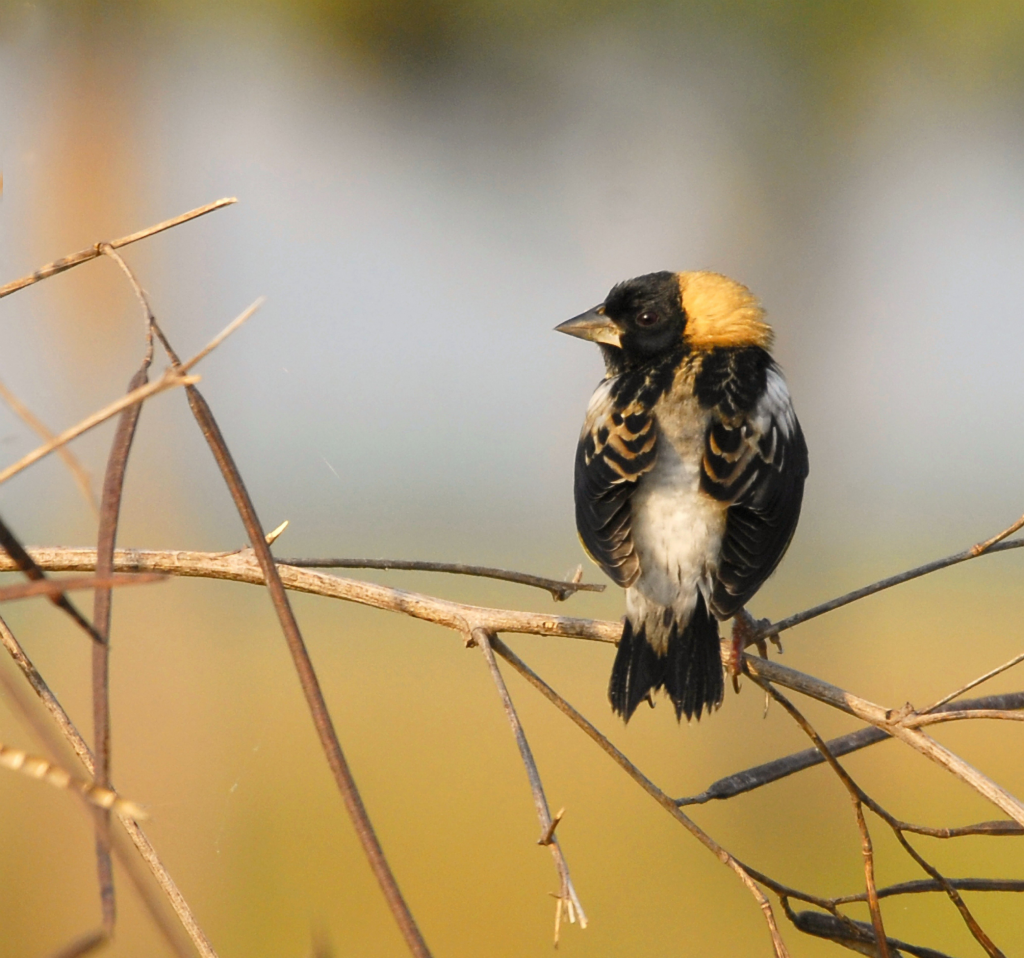
“Bobolink at Lake Woodruff – Flickr – Andrea Westmoreland” by Andrea Westmoreland from DeLand, United States is licensed under CC BY-SA 2.0.
The bobolink (Dolichonyx oryzivorus) is a diminutive New World blackbird and represents the sole member of the Dolichonyx genus. Adult bobolinks measure between 16–18 cm (6.3–7.1 in) in length, boasting short finch-like bills and weighing around 28 g (1 oz). Adult males sport predominantly black plumage with creamy napes and white scapulars, lower backs, and rumps.
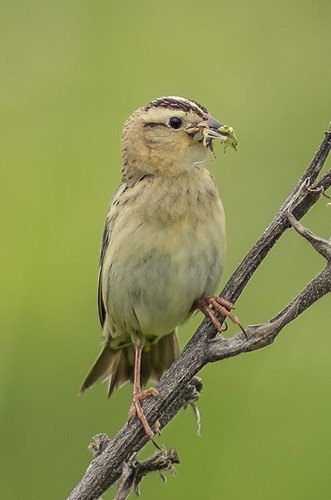
“Bobolink-Female” by CheepShot is licensed under CC BY 2.0.
In contrast, adult females showcase primarily light brown feathers adorned with black streaks on the back and flanks, along with dark stripes on the head, while their wings and tails exhibit darker shades.
In the southern United States, this species has historically been referred to as the “reedbird” or “ricebird” due to its consumption of substantial quantities of rice grain during the southward migration in the fall, particularly in South Carolina and the Gulf States.

“Bobolink” by U.S. Fish and Wildlife Service – Midwest Region is marked with Public Domain Mark 1.0. (cropped)
Historically known as the “rice bird” due to its proclivity for consuming cultivated grains during winter and migration, this species breeds in the United States and Canada during the summer, predominantly in the northern regions. Bobolinks embark on long-distance migrations, wintering in the southern regions of South America, including Paraguay, Argentina, and Bolivia. Unfortunately, bobolink populations are facing rapid declines, attributed to factors such as intensified agriculture and habitat loss.
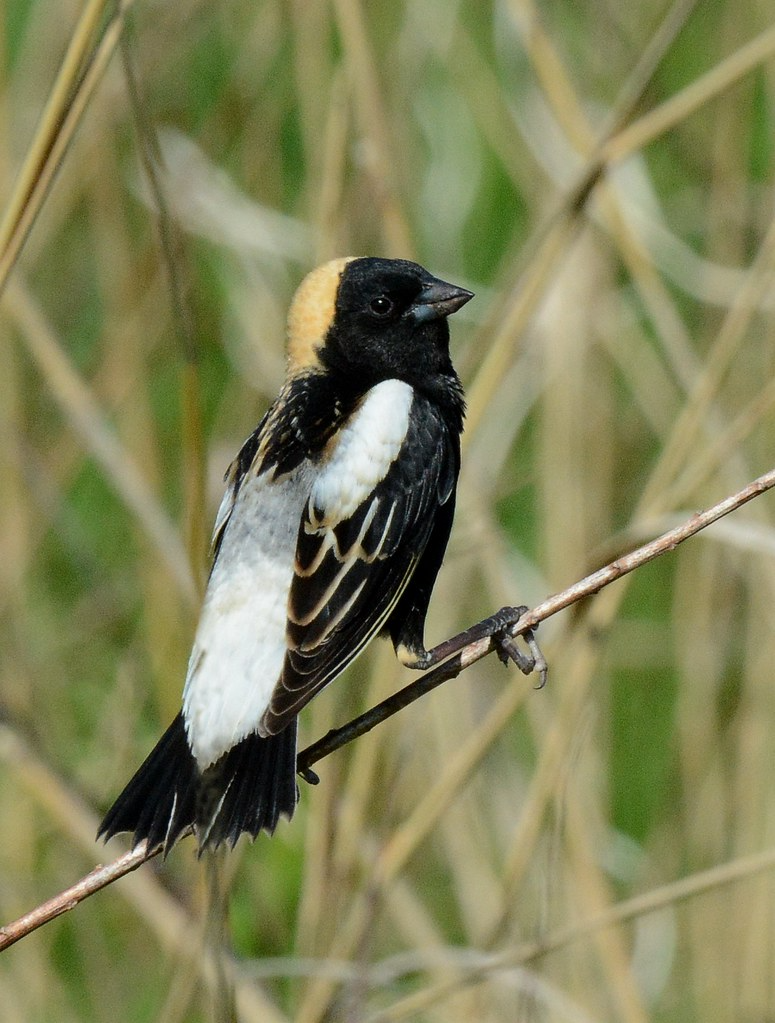
“Bobolink” by U.S. Fish and Wildlife Service – Midwest Region is marked with Public Domain Mark 1.0.
Bobolinks thrive in open grasslands or former hayfields characterized by a blend of medium-tall grasses and forbs, with minimal shrubs or trees present. They particularly favor fields with approximately 1 inch of thatch covering the ground. To support successful breeding, a minimum field size of 5-10 acres is required, although larger fields are preferred as they can accommodate more breeding pairs.
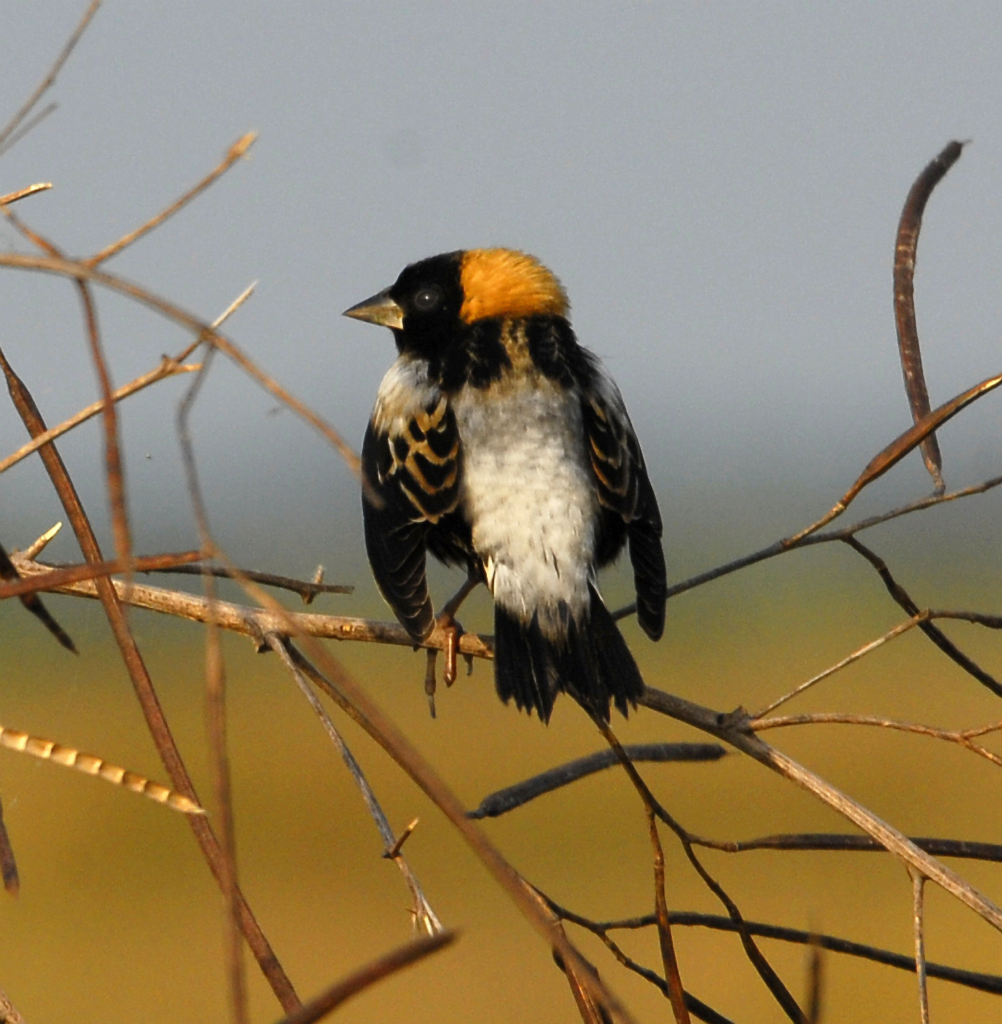
“Bobolink at Lake Woodruff (Dolichonyx oryzivorus) – Flickr – Andrea Westmoreland” by Andrea Westmoreland from DeLand, United States is licensed under CC BY-SA 2.0.
Bobolinks are primarily ground foragers, predominantly subsisting on seeds and insects. They are aptly nicknamed the “armyworm bird” due to their significant predation of armyworms, including the true armyworm (Mythimna unipuncta) and the fall armyworm (Spodoptera frugiperda), serving as a natural pest control agent. In Florida, bobolinks primarily prey on the Fall armyworm rather than the True armyworm, as the former is more prevalent in the region.
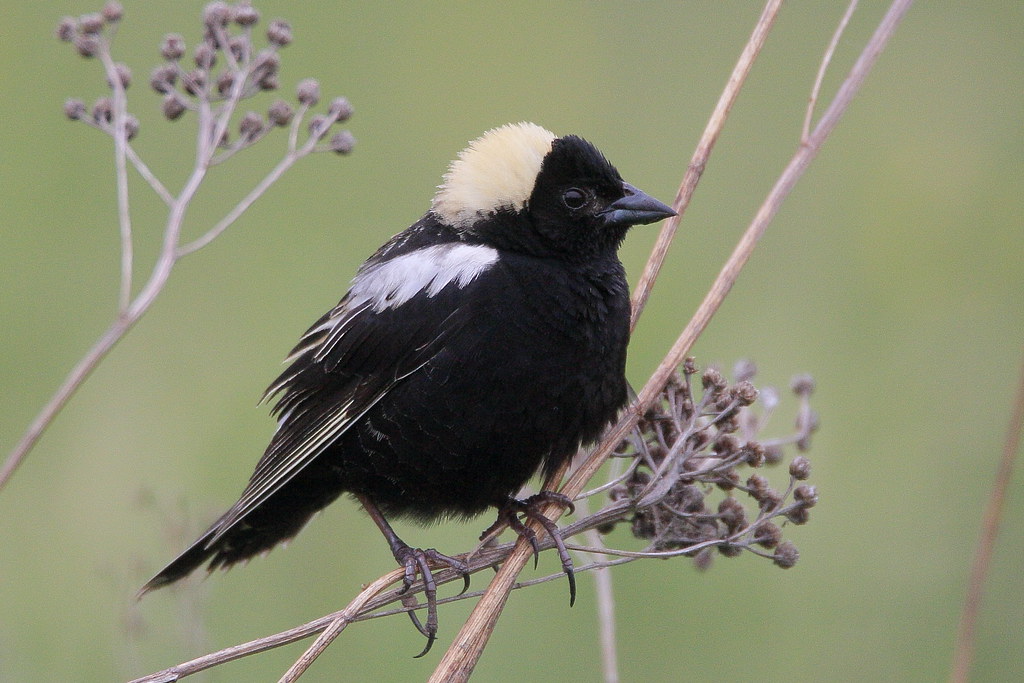
“Bobolink” by Scott Heron is licensed under CC BY-SA 2.0.
Breeding Bobolinks establish breeding habitats in open grassy fields, particularly in hay fields, across North America. In optimal environments, males often display polygynous behavior. Female bobolinks lay five to six eggs in cup-shaped nests that are always positioned on the ground, usually hidden amid dense vegetation. Both male and female parents participate in feeding the young.
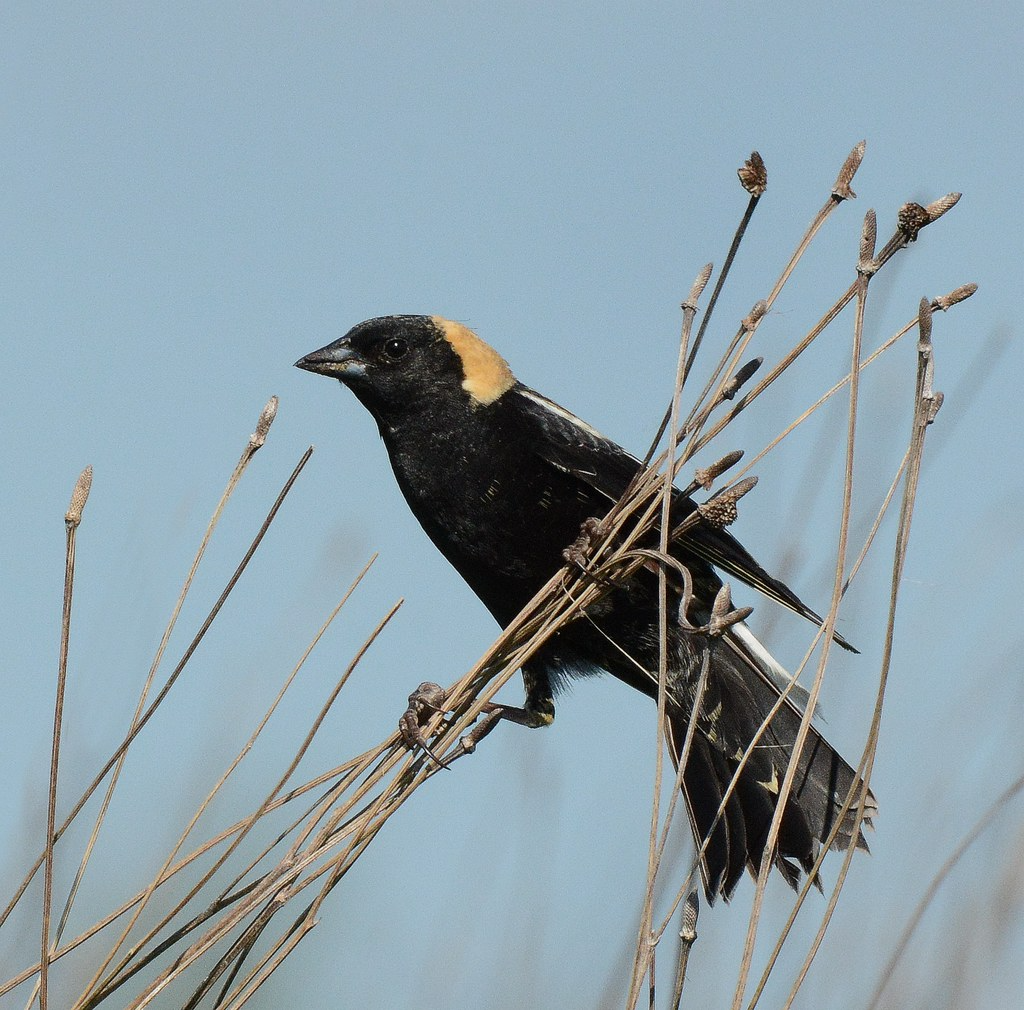
“Bobolink” by U.S. Fish and Wildlife Service – Midwest Region is marked with Public Domain Mark 1.0.
During the 1800s, bobolinks, like many other bird species, were extensively hunted for the meat trade. Presently, bobolink populations are dwindling due to habitat loss. In Nova Scotia, they are classified as a species at risk, and this designation extends throughout Canada. In Vermont, a 75% population decline was recorded between 1966 and 2007. Originally, they inhabited tallgrass prairies and other open areas with dense grass. Although hay fields serve as suitable nesting habitats, fields harvested early or multiple times within a season may not afford adequate time for young birds to fledge. Delaying hay harvests by as little as 1.5 weeks can enhance bobolink survival rates by up to 20%.
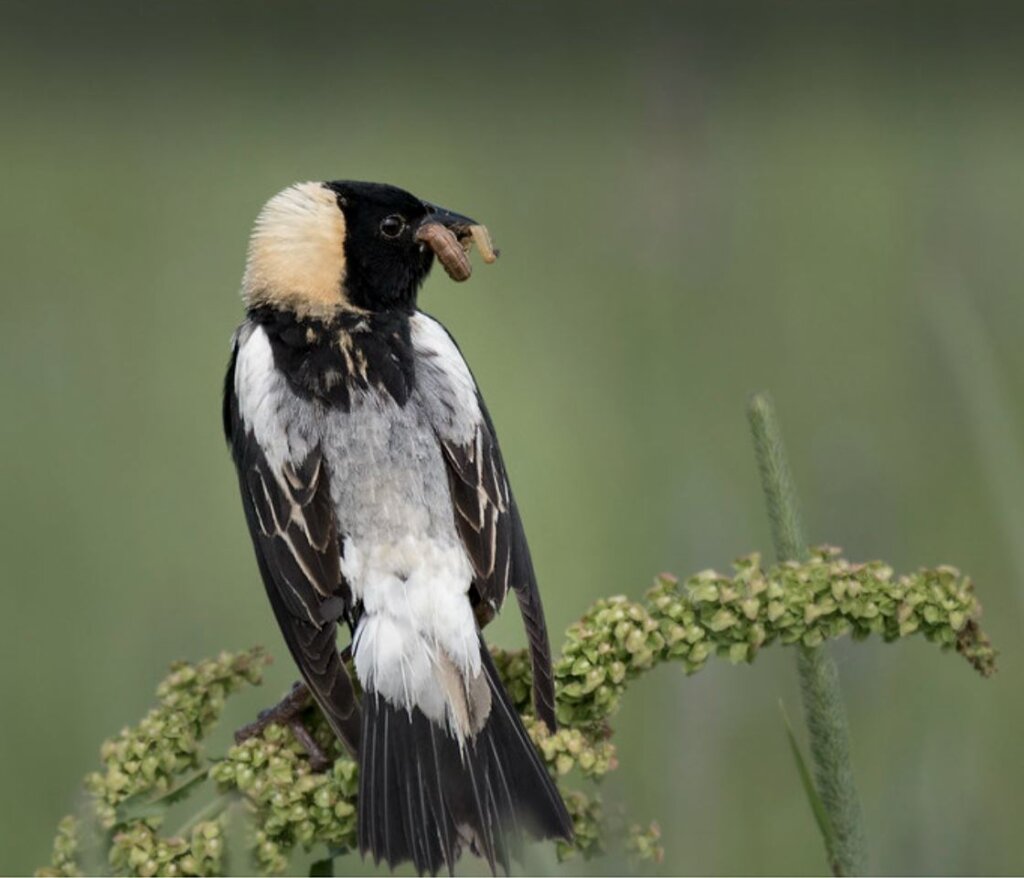
“Bobolink / Goglu des prés / Dolichonyx oryzivorus” by FRITSCHI PHOTOGRAPHY is licensed under CC BY 2.0. (cropped)
Listen to this bird next mostly:




